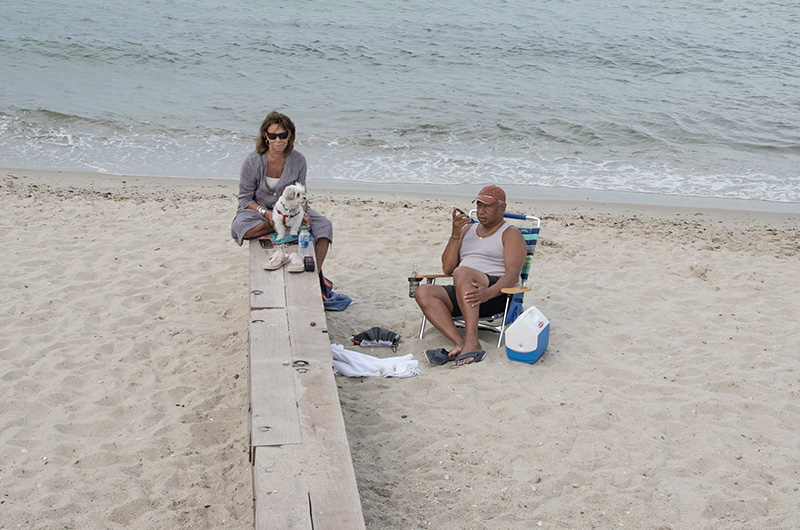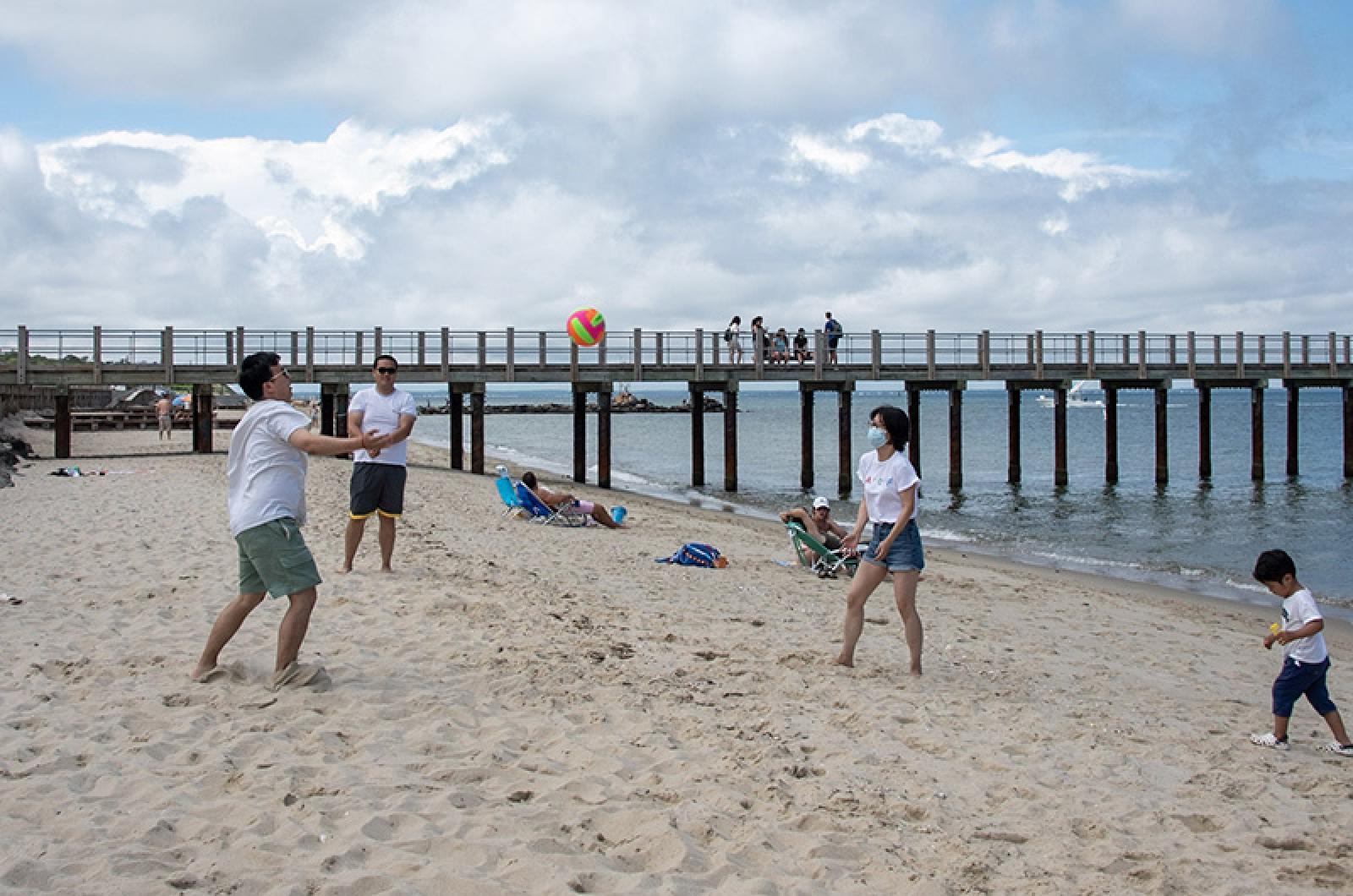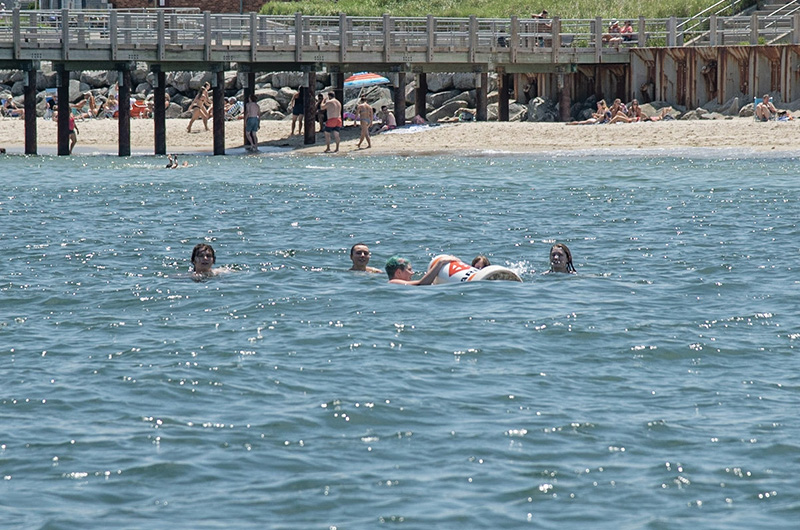For years, the North Bluff beach in Oak Bluffs has been slowly disappearing. The spot on Seaview avenue fronting the tranquil waters of Nantucket Sound was a favorite among residents until severe erosion washed most of it away.
Now all that has changed.
This summer, the beach is a clean stretch of deep sand, attracting people of all ages to the swimming-friendly spot where you can watch ferries come and go from the nearby Steamship Authority wharf.
Officially opened this week, the new beach marks the conclusion of the North Bluff preservation project, a four-year grant-funded initiative to re-engineer and protect the north-facing shoreline in the face of rising seas.

“This is not just a new beach,” said Liz Durkee, the Oak Bluffs conservation agent and person who spearheaded the project.
“This is a coastal climate resiliency project to help the town address sea level rise and stronger storms. [It’s] part of a much larger plan that we have to help address climate change on our coastline.”
The project dates back for years and began in 2008, after a portion of the seawall at the town beach collapsed. Ms. Durkee said the collapse was a wakeup call and prompted a comprehensive investigation of the health of the town’s seawalls.
“We needed to take a look at the stability of our coastal seawalls because they’re very old. Storms are getting stronger, storm surges are getting bigger, the sea is rising and none of that is going to do anything good for these deteriorating seawalls,” she said.
In 2016, with the aid of state grant money as well as Community Preservation Act funds, the town set out to rebuild the North Bluff seawall with a pedestrian boardwalk on top of it. Renourishment of the beachfront soon followed, using sand dredged from Sengekontacket Pond and funded by the state’s Municipal Vulnerability Preparedness program action grant. Most recently, new wooden groins were installed, and 2,000 native rosa rugosa bushes were planted along the bluff.
The project’s conclusion marks the first successful completion of a climate adaptation project on the Oak Bluffs shoreline, Ms. Durkee said.
The choice to invest in coastline restoration was not a difficult one for the town, she said. One of the Island’s strongest selling points is its extensive shoreline and picturesque beaches — so saving them was not a decision so much as a necessity.
“If we added up all that free services our coastal resources provide us it comes to $150 million,” said Ms. Durkee. “Beaches are one of the main reasons people are attracted to the Island. We want to protect and preserve [them] for as long as we can.”
By that measurement, the $7.5 million preservation project was well worth the price tag.
Ms. Durkee lauded the town for taking a proactive stance in addressing climate change.
Other towns on the Island have begun similar projects. Edgartown and Vineyard Haven both are using Coastal Zone Management resiliency grants to examine their harbors, while the Martha’s Vineyard Commission is working on a climate adaptation master plan for the Island.
With differing geographies, each town will have to address climate adaptation with individual creative solutions, Ms. Durkee said. She urged action soon.
“Right now there’s a lot of funding out there for climate resiliency and adaptation,” she said. “[But] the longer we wait, the more expensive it gets and the worse the conditions become . . . Once Boston and New York start getting impacted, a little coastal resort is not going to be a priority for funding anymore.”
Future plans aside, Ms. Durkee is glad to see the North Bluff beach return. For beach-lovers and environmentalists alike, it will serve as a reminder of the Island’s long coastal history and a testament to the power of community initiative.
“I hope that people love it,” said Ms. Durkee. “A lot of people who grew up here have really fond memories of that beach and it just makes me so happy to see people enjoying [it again].”







Comments
Comment policy »